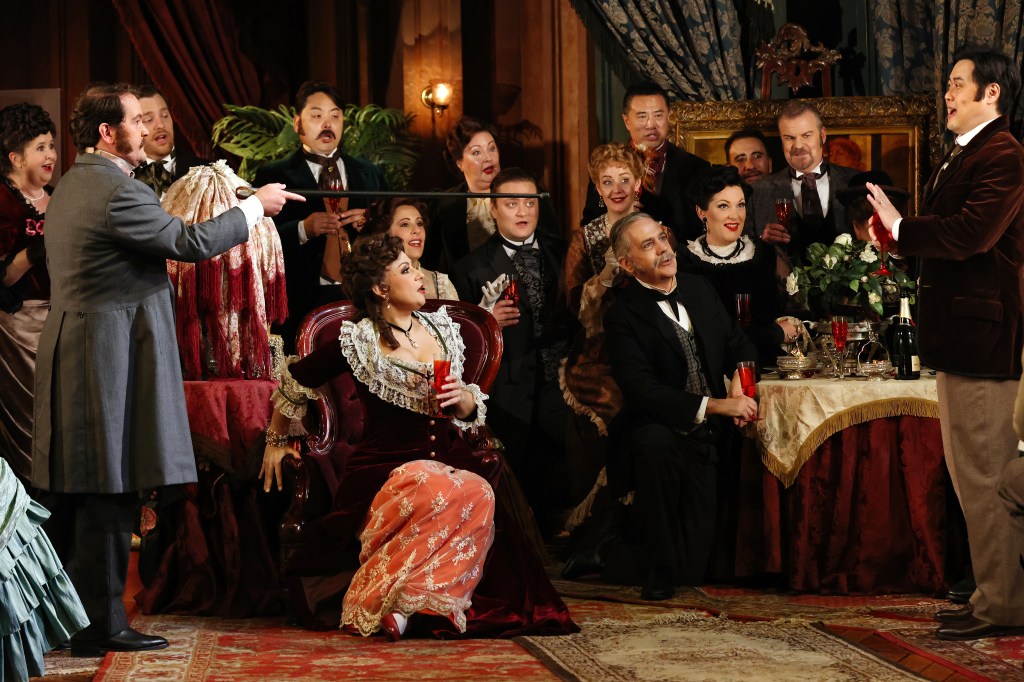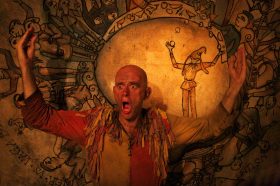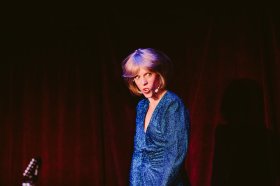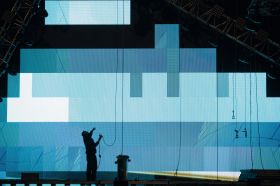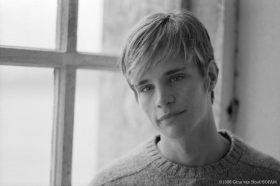The celebrated original director of this production of La Traviata, Elijah Moshinsky gained more than a little fame, or perhaps infamy, in the early 1990s when he published a strongly worded essay entitled ‘Verdi: A Pox on Postmodernism’. Moshinsky was tired of all the political correctness that opera companies felt obliged to observe when staging these great operas. And while he acknowledged that times had changed, he wanted these works to be respected and treasured and not manipulated to suit modern ideals.
Sadly, Moshinsky died in January last year from COVID complications, but I think it’s safe to say that this Opera Australia production, helmed by revival director Warwick Doddrell, has stayed true to his vision. Doddrell directs with a nuanced touch to ensure we share the sentiment of each moment.
It’s easy for La Traviata to feel like a production of opera’s greatest hits, such are the magnificent and well-known arias, but together these creatives and Opera Australia have created a delightful imagining of Verdi’s masterwork. The sumptuous sets and costumes, and strong performances from the principals, chorus and orchestra, make this a well balanced and thoroughly engaging production.
The story of La Traviata – the fallen woman – is about the power of love to overcome societal barriers of class and money. Sadly, it can’t overcome everything, and Violetta still succumbs to her tragic fate, albeit dying with a happy heart. This production is playing in the smaller Joan Sutherland Theatre at the Sydney Opera House and the intimacy of the space is the perfect setting for La Traviata, where most of the action takes place in a Parisian salon and Violetta’s boudoir.
Russian soprano Irina Lungu was enchanting as Violetta. She was delightful to watch and sang with a wonderfully controlled and rich voice. Lungu was on stage in almost every scene and easily segued from the confident courtesan to the respectable countrywoman and finally the dying lover. And Violetta had all the best moments, from the vivacious aria ‘Sempre Libera’, proclaiming her independence and love of the good life, to the tragic Third Act ‘Addio del Passato’ where she knew it’s all over.
Korean tenor Ji-Min Park sang the role of the love-struck Alfredo Germont with warm, rounded tones, but a little more power and projection would have been welcome. Alfredo is such a naïve character that it is always hard to believe he could win Violetta’s heart and Park handled this contradiction smoothly; however, slightly more passion would not have gone astray. Park did, however, make the most of his moment centre stage in Act 1 with the singalong drinking song ‘Brindisi’, when he was accompanied by the chorus in fine voice.
Luke Gabbedy was impressive as Alfedo’s father Giorgio and had a strong stage presence as he pleaded first for his family’s good name and later for forgiveness.
Celeste Haworth was engaging as Violetta’s friend and rival Flora, singing with a teasing flirtatiousness and able to convey so much with a single glance.
The staging of the big emotional moments in the story – Alfredo’s declarations of love, Giorgio’s pleas for his family’s honour, the deathbed reunion and, yes, Violetta’s death scene – were handled with a nuanced touch. The beautiful tableau at the end of Act 2, Scene 2, was staged with cut-glass precision. The sets were pared back in Act 3 to focus our full attention on the dramatic finale and the emotionality of the singing.
This made an effective counterpoint to the divinely decadent sets and costumes for the party and salon. These were rich and colourful with wonderful textures, opulent colours and superb attention to detail in the set dressing. Full marks indeed to set designer Michael Yeargen and original costume designer, the much-acclaimed Peter J Hall, who died a couple of years ago. The sets and costumes, along with lovely lighting design by Nigel Levings, really do set the scene and go a long way to telling the story.
Read: Theatre review: tuylupa
The Opera Australia Orchestra, under the vibrant conductor Tahu Matheson, gave a richly satisfying performance. There was an abundance of warmth and vivid detail in the playing. And the members of the Opera Australia Chorus were uniformly excellent in voice and choreography, adding enormously to the glorious intimacy of the salon scenes.
The principals were rewarded with rousing applause as they took their many bows after the final curtain. Rather unusually, the Chorus did not appear for the applause. This seems a shame as they gave an excellent performance and deserved more than a few bravissimi from the happy audience.
This was a most assured production and a delight for opera buffs and newcomers alike. My only criticism is that the positioning of the surtitles rendered them to be of little use – so high that you couldn’t see them without missing the action on stage (and suffering a sore neck too!); and the screens to the side of the stage were so small as to only be useful for the youngest of eyes. It would be good to see this addressed in future productions.
La Traviata
Opera Australia Orchestra and Chorus with Conductor Tahu Matheson
Sydney Opera House
Director: Elijah Moshinsky
Revival Director: Warwick Doddrell
Set Designer: Michael Yeargan
Costume Designer: Peter J Hall
Lighting Designer Nigel Levings
Choreographer: Matthew Barclay
Cast: Irina Lungu, Ji-Mi Park, Luke Gabbedy, Celeste Haworth
Tickets: from $48
La Traviata will be performed until Friday 4 November 2022.
